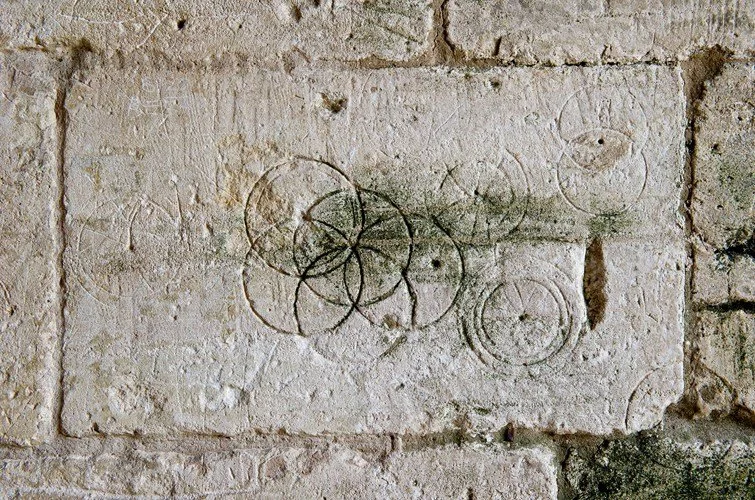Bizarre Mysteries: Apotropaic Rituals, Magic Charms, and Protection Spells!
Apo who? Lucky Charms? (And not the cereal!) Protection spells? What is this vile sorcery? Grab a seat, and let’s explore ancient methods thought to thwart evil!
Wondering how I came across this topic? Glad you asked, my friends! I’ve been doing a ton of research (no shocker there!) on protection incantations and various spells folks would cast in days of yore, all for my next book. Rosemear is a tale about a haunted mansion rife with ghosts, betrayal, and heartbreak. This plantation, built in the 1800s, had more than its fair share of tragedies, and because of that, its previous owners tried everything in their power to ‘cleanse’ the house.
Including protection spells, preventive barriers, and other safeguards to aid in keeping the residents of the home safe.
Alas, at least for the occupants of Rosemear, nothing worked… because nothing was as it seemed!
But enough of my shameless plugging! Back to the evil at hand 🖐 😁
Before we get too invested, though, let’s explore that crazy word (which I’d never heard of) called apotropaic. Pronounced ‘app-ah-tro-pay-ic,’ Webster’s dictionary defines apotropaic as a measure ‘designed to ward off evil.’ Simply put, these are your rituals, marks, charms, and amulets thought to safeguard people and property from the wicked, malicious nasties that try to worm their way into our homes.
Yeah…heavy stuff 😜
So, in the spirit of spooky October—and because we all love to learn creepy facts—we will explore a variety of talismans, symbols, and protections that began hundreds of years ago and, to some, still ring true today.
Don’t believe me? Keep reading, or I’ll give you the ‘evil eye!’
Yes, my friends, the ol’ evil eye is an example of averting dastardly spirits and demons!
Some believed this supernatural curse—thought to have been started in ancient Greece with the image of an eye on a drinking cup—meant that a malevolent glare in one’s direction could result in dire consequences to the recipient of such a glare.
Others during that time asserted that the evil eye acted as a form of protection, and wearing an amulet with its image actually reflected danger away from the wearer.
Image credit: Freepik
And, yeah…the evil eye as a shield is considered an apotropaic talisman. (Learned something, didn’t ya?)
So, what are some other symbols considered apotropaic in nature? An interesting one is called a hexafoil or daisy wheel. This mark, which dates as far back as the 6th century (which is between 501-600 AD for those calendar nerds reading😜)resembles a daisy within a circle. Often etched into fireplaces, walls, or above doors, it was thought to prevent witches and evil spirits from entering the home.
And all I do when encountering evil or nasty ghosts is burn sage. Lame.
Image credit: Historic England.org
Here’s another:…ever heard of the term ‘immurement?’ Me neither! Immurement is a fancy word for the practice of burying or concealing things within the walls of a home (and yes, before you ask, this does include the ancient art of burying someone alive inside a wall or floor!) There are countless stories of people doing renovations on very old homes and finding skeletal remains, assorted animal bones, shoes, and coins.
In years past, Kings, Queens, Governors, and others who have reigned over a community used immurement for many reasons; to punish criminals, remove people they viewed as a threat, protect their castles while bringing good fortune, or simply for entertainment.
Because nothing says ‘fun’ like watching a person slowly die🙄😕
Honestly, a brutal and, might I add, unattractive quality in a royal regime.
On occasion, poor souls who were not sentenced to die would, instead, be walled up for years and fed meager meals through a slit in their prison. Some of these committed crimes against society; others were pedophiles (okay, not crying about those jokers!). Occasionally, nuns actually volunteered to be imprisoned with the saddest of victims, the children— sacrificed by their own parents as it was believed the blood of an innocent strengthened the castle walls.
Some stayed alive for years within their prisons; many more perished.
The rest of the immured were murderers, Vestal Virgins who broke their vow of chastity, or other people considered ‘heretics’ …monks and nuns who, too, either broke their vows or dared question a King’s barbaric ideation. Walled up while alive, they died from starvation, dehydration, or lack of oxygen.
Image credit: journalnews.com
When not torturing people, immurement was used as a form of apotropaic magic. Burying innocuous items( such as shoes, jewelry, and pottery) belonging to a homeowner was thought to deter the entrance of sinister spirits or witches.
Fun fact? There may be a touch of immurement in Rosemear! 🩻🦴
So, what other marks have been found in old homes? Scorch marks and Marion marks, that’s what! Scorch marks, usually found on wooden beams, were created by tilting a tapered candle near the timber to create an oval design. This would burn a small section of wood within the home, protecting all who dwelled there from fire.
Sort of a ‘fight fire with fire’ way of thinking, I suppose.🤷♀️
Marion marks resemble two ‘V’s joined together to form a ‘W’ or an ‘M’ and are thought to invoke the protection of the Virgin Mary. Banisters, fireplaces, and front doors were common places to find Marion marks in a home. On occasion, as pictured below, there was an ‘A’ in front of the ‘M,’ meaning ‘Ave Maria.’
Fascinating stuff!
Image Credit: Apotropaios.com/Uk
There are honestly so many images, rituals, and totems we have used for protection the past—and still use today—that it would be difficult to name them all. But, in the interest of luck (think salt over the shoulder, a rabbit’s foot, a four-leaf clover), I’ve included a few more.
Crosses…In Ireland, on St. Brigid’s Day, people weave a ‘Brigid’s Cross’ and hang it above the door to ward against illness, fire, and bad luck. A Brigid’s cross differs from the usual cross in that there is a diamond shape at the center of the cross.
Dreamcatchers…These are hung above a child’s bed to catch and lock away nightmares. True story? My son, John, was prone to nightmares as a kid so we placed a dreamcatcher in his bedroom. One day, after having another nightmare, he informed me he was afraid the dreamcatcher was ‘full’, so I vacuumed it. After emptying the ‘bad dreams’ from the vacuum to the garbage, John panicked, concerned that the trash men who collected the vacuum bag would now be subjected to all his nightmares. What eight-year-old would even think of that? A gem of a kid, that’s who!❤️❤️
Horseshoes…The iron in these beauties was said to repel witches and evil spirits, as iron was thought to have supernatural power and strength. Hung above entrances, if the ends pointed upward, it was said to ‘catch’ good luck as it entered the home. If the ends pointed downward, it was said to spread good luck and fortune throughout the home.
Also, pretty cool-looking decor, in my opinion!
Image Credit: Gettyimages.
That will do it for this time! Now, I have a request from you all! I would love to do a blog about NDE’s. For those of you unaware, a NDE is a Near-Death Experience. I find them fascinating and my original thought was to research (obviously lol) reported cases all over the world. But then, it hit me…
Credit: Pinterest.
What if I turned to you, my readers, for true stories of NDE’s? Does anyone have any first-hand experiences, or know anyone who has? It could be a friend, family member, even a friend of a friend!
If any of you have something to share, I would LOVE to hear about it! And don’t worry—your identity will remain a secret! Just reach out via my website or email me at Quinnnoll@gmail.com, leave your name and a contact email, and I will be in touch!
Honestly, I would love to hear about it!
Til next time!
Peace out, scuba scouts…
—Q





